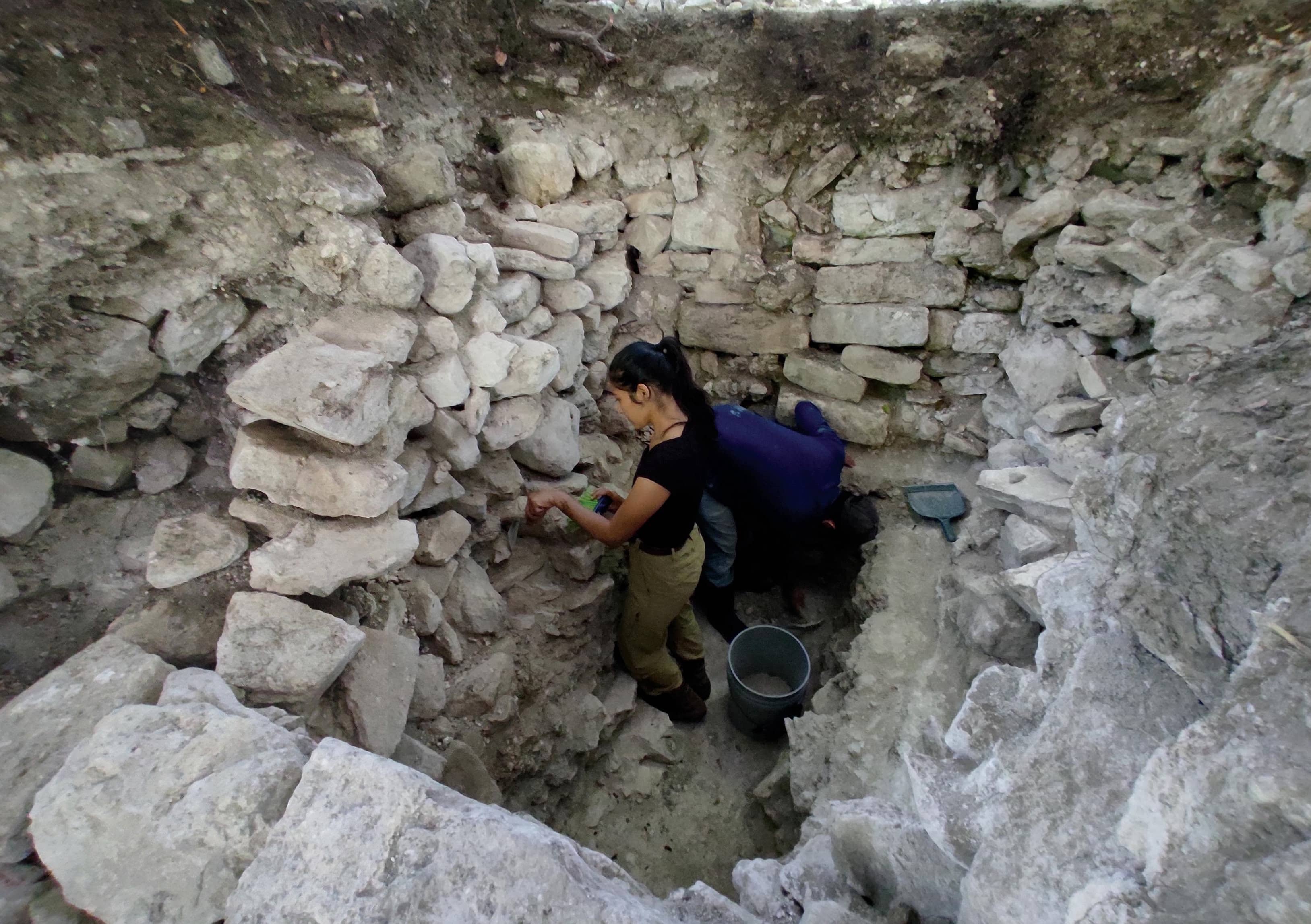A Dynasty Born In Fire- How an upstart Maya king forged a new social order amid chaos

A singular event took place at the beginning of the ninth century A.D. that must have stunned the residents of the Maya city of Ucanal, capital of the K'anwitznal Kingdom, in northern Guatemala's Petén region. Their new ruler, Papmalil, presided over a sensational public ceremony during which the bones of four of his predecessors, which had been removed from their tombs inside one of the city's pyramids, were placed on a pyre. As Ucanal's citizens looked on, the flames reached nearly 1,500 degrees Fahrenheit, scorching and warping bone and shattering some of the precious objects that had also been taken from the tombs. The roar of the flames must have been thunderous, especially when punctuated by the sharp pops of exploding stone. Families that had been loyal to Ucanal's earlier dynasties were doubtless concerned for their future. Those who supported Papmalil likely rejoiced. Perhaps a musician accompanied the ceremony by playing the flute.
Pieces of greenstone and obsidian from a Maya funeral mask were discovered in a deposit of material that was removed from royal tomb in antiquity
While the precise details of how the ceremony unfolded are unknown-the event is not described in any text or recorded on any monument-the recent discovery of the burned bones and broken objects has provided evidence of what archaeologist Christina Halperin of the University of Montreal identifies as a tipping point in the K'anwitznal Kingdom's history. "This event marked the symbolic and literal destruction of an earlier K'anwitznal dynastic line," Halperin says. "It's so rare in the archaeological record to see a moment of fissure like this, where people immediately understand that they're doing away with a previous historical moment and entering into a changed political system."
This story is from the {{IssueName}} edition of {{MagazineName}}.
Start your 7-day Magzter GOLD free trial to access thousands of curated premium stories, and 9,500+ magazines and newspapers.
Already a subscriber ? Sign In
This story is from the {{IssueName}} edition of {{MagazineName}}.
Start your 7-day Magzter GOLD free trial to access thousands of curated premium stories, and 9,500+ magazines and newspapers.
Already a subscriber? Sign In

LEGEND OF THE CRYSTAL BRAIN
When most people envision the victims of the eruption of Mount Vesuvius in A.D. 79 that destroyed the cities of Pompeii and Herculaneum, they think of the casts of their bodies made by pouring plaster into voids left by their decaying corpses. Yet not all the physical remains of those who perished in the cataclysm decayed. In one case, a remarkable transformation occurred—a man’s brain turned to glass.

Birds of a Feather
Intriguing rock art in the Four Corners reveals how the Basketmaker people drew inspiration from ducks 1,500 years ago

THE HOME OF THE WEATHER GOD
In northern Anatolia, archaeologists have discovered the source of Hittite royal power

SAINTS ALIVE
Since 2019, archaeologists have been excavating in Berlin's oldest square, known as the Molkenmarkt, or Whey Market.

SOLDIERS OF ILL FORTUNE
The Schmalkaldic War, which began in 1546 and lasted less than a year, pitted the forces of the Holy Roman emperor Charles V (reigned 1519-1556) against the Schmalkaldic League, a Protestant alliance formed by German principalities and cities within the empire.

A NEW LOOK AT AN OLD CITY
Archaeologists are reconstructing the complicated 400-year history of Virginia's colonial capital

ITALY'S GARDEN OF MONSTERS
Why did a Renaissance duke fill his wooded park with gargantuan stone

In Search of Lost Pharaohs
Anubis Mountain conceals the tombs of an obscure Egyptian dynasty

Setting Sail for Valhalla
Vikings staged elaborate spectacles to usher their rulers into the afterlife

BOUND FOR HEAVEN
During excavations of a Byzantine monastery in 2017 just north of Jerusalem's Old City, a team led by Israel Antiquities Authority archaeologists Zubair 'Adawi and Kfir Arbiv discovered an unusual burial in a crypt beneath the altar of the complex's church.
